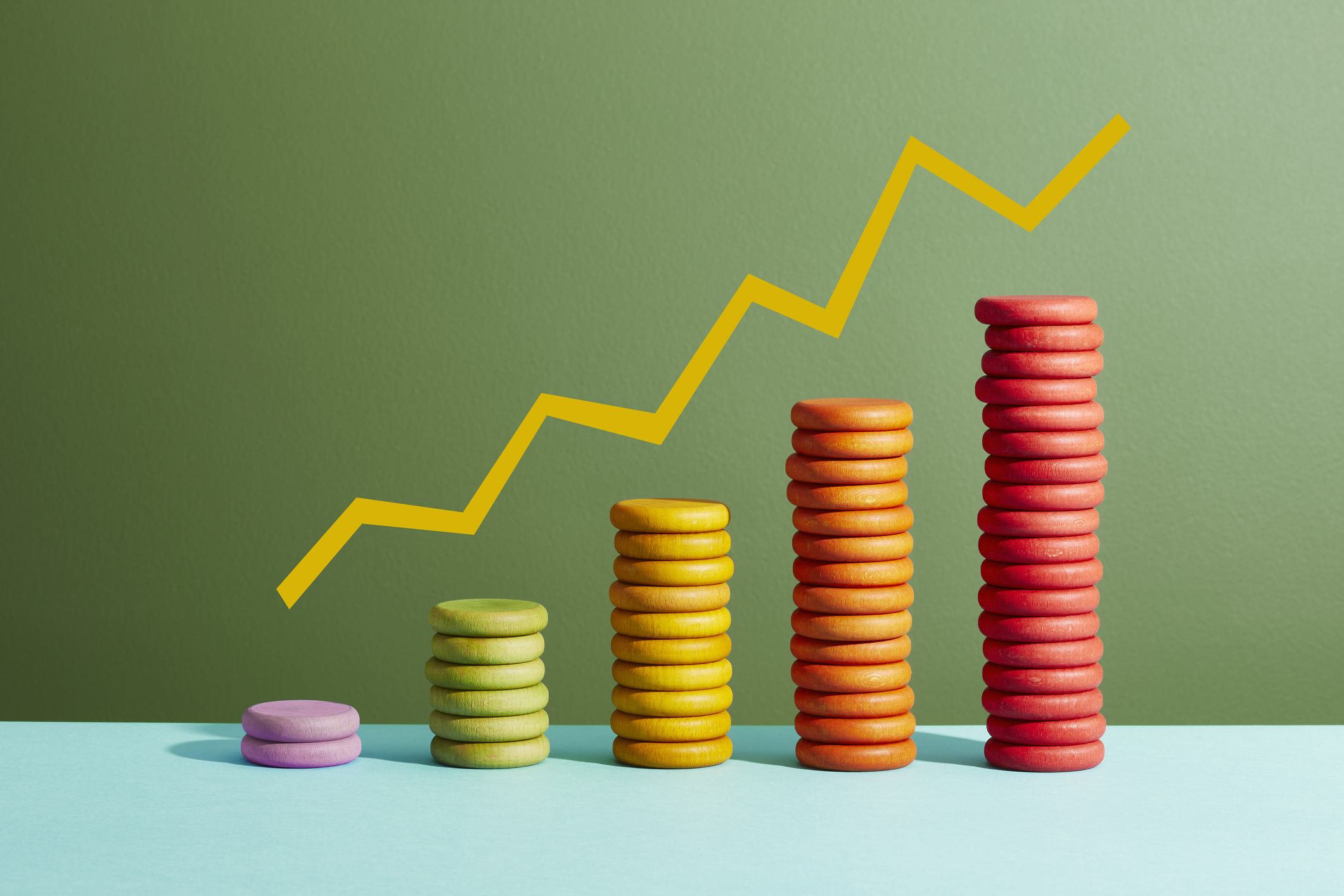Turning Your Stock-Market Lemons into Lemonade
The wise investor doesn't leave tax strategy until the end of the year.

Despite the stock market's strong rally last week, shares are still down almost 7% since April 2, and dozens of financial pundits are calmly telling clients to "stay the course" to avoid selling into a market rout. But a better response may be to sell, says Rande Spiegelman, vice-president of financial planning at Charles Schwab & Co.
SEE ALSO: Brace Yourself for Tax Changes in 2012
Not that you should throw in the towel or change your investment strategy. But recognize that market reversals can present a good opportunity to harvest tax losses that you can use to offset future gains. "The problem is that most people think about tax-loss harvesting at the end of the year," he says. "That's an arbitrary time that limits your flexibility. When the market is down, particularly when it happens fairly quickly, you ought to see if you can recognize some losses."
From just $107.88 $24.99 for Kiplinger Personal Finance
Become a smarter, better informed investor. Subscribe from just $107.88 $24.99, plus get up to 4 Special Issues

Sign up for Kiplinger’s Free Newsletters
Profit and prosper with the best of expert advice on investing, taxes, retirement, personal finance and more - straight to your e-mail.
Profit and prosper with the best of expert advice - straight to your e-mail.
In the wonderful world of investment tax planning, today's loss is tomorrow's write-off. The more optimistic you are about the long-term prospects in your portfolio, the more you're likely to want to trigger a few losses when opportunities arise. Now may be one of those times.
Before you begin prospecting for potential losses, remember that even if you were badly burned by the market in recent weeks, you might not have a loss as far as the IRS is concerned. For tax purposes, a loss is not measured from peak value. Rather, it is based on your original investment, or tax basis. Consider a block of stock purchased for $10,000 that was worth $25,000 in early April but only $18,000 today. If you sell for $18,000, you might feel $7,000 poorer. But the IRS sees an $8,000 capital gain.
On the other hand, if you were burned by particularly bad timing – you jumped into stocks big in late April, thinking that you were missing the run-up – now could be the time to sell that money-losing holding. You should simultaneously buy back something similar, so you don't lose the chance to profit from the next market rise.
Beware the wash-sale rule. Assuming you have losses to harvest, you have to move carefully to avoid running afoul of the tax man or messing up your portfolio. That's because wash-sale rules bar you from taking a write-off if you repurchase the same or a "substantially identical" security within 30 days of a sale.
Because there's no way to predict when the market – or an individual stock – might recover, it's risky to sell a security that you really want to own. That makes it tricky to harvest losses on individual stocks. But if you own index funds or exchange-traded funds, which typically follow an index, tax loss harvesting is easy because there are many funds that are similar but not "substantially identical." That means you can sell one and repurchase a similar one in the same breath, triggering a valuable tax loss and maybe even leaving your portfolio in a better position to profit going forward.
Consider, for example, someone who bought $100,000 worth of Vanguard 500 Index Fund (symbol VFINX) when it peaked in early April at $130.76. That $100,000 holding is now worth just over $93,000, or nearly $7,000 less than when she purchased it. She could sell that fund and buy Vanguard Total Stock Market ETF (symbol VTI), which would give this investor a more diversified portfolio and a lower expense ratio. VFINX invests in 500 big companies and charges 0.17% of assets each year in fees, while VTI owns shares of 3,200 companies that are representative of the entire U.S. stock market and charges annual fees of just 0.06%. (It's worth noting that VTI fell a bit less than VFINX when the market tanked in May.)
Assuming that both the Total Market and S&P 500 indexes produce equivalent returns, the 0.11 percentage point difference in annual costs would save this investor roughly $12,000 in fees and forgone investment returns over a 20-year investment horizon. (You may not hold the investment for 20 years, of course, but it's important to be aware of these differences in case the IRS ever asks what makes these investments different enough to avoid a wash sale.)
At the same time, triggering the $7,000 investment loss allows her to offset other gains or ordinary income.
Capital losses can be used to offset an unlimited amount of capital gains in the year they are triggered. If you don't have enough gains to use up the loss, up to $3,000 can be used to offset ordinary income each year, too. And excess losses can be carried forward to future years until they're used up.
The bottom line: Triggering that $7,000 capital loss could save this investor $1,050 in tax on a $7,000 long-term capital gain (and up to $2,450 if she held the shares for a year or less) – and she'd likely reap additional savings on her state income tax bill, too.
Sell the right shares. One caution: If you have purchased shares over time and are selling just a portion of your position in a fund, you'll need to specify which shares you're selling before the sale, says Bo Lu, co-founder of FutureAdvisor, a Web-based investment advisory service. Because you bought the shares at different times, you undoubtedly bought at different prices, too, so your tax basis – and the extent of your loss -- will vary depending on which shares you unload.
Unless you stipulate otherwise, the law applies the "first in, first out' (FIFO) method to figure the gain or loss, which is likely to produce the worst tax results for you. For instance, if you had been buying $1,000 worth of the S&P 500 fund through automatic investments since the 1980s, you could have a gain in the shares for tax purposes if you used the FIFO method, even though the more recently purchased shares have declined in price.
But there's a simple solution: As long as you say so in advance, you can choose to sell the shares that you bought at the highest prices to generate the biggest tax loss.
Just make sure you stipulate what shares you're selling before executing the trade and get written confirmation from your broker or mutual fund.
Kathy Kristof is a contributing editor to Kiplinger’s Personal Finance and author of the book Investing 101. Follow her on Twitter. Or email her at practicalinvesting@kiplinger.com.
Sneak preview: New tax benefits -- as well as burdens -- for 2012
Profit and prosper with the best of Kiplinger's advice on investing, taxes, retirement, personal finance and much more. Delivered daily. Enter your email in the box and click Sign Me Up.

-
 Should You Renew Your CD?
Should You Renew Your CD?With rate cuts impacting earnings, we examine if now is a wise time to renew CDs.
-
 7 Ways to Plan Now to Save on Medicare IRMAA Surcharges Later
7 Ways to Plan Now to Save on Medicare IRMAA Surcharges LaterUnderstand the critical two-year lookback period and why aggressive planning before you enroll in Medicare is the most effective way to minimize IRMAA.
-
 Law Reversal Looming? Trump Eyes 2026 Gambling Winnings Tax Change
Law Reversal Looming? Trump Eyes 2026 Gambling Winnings Tax ChangeTax Deductions It's no secret that the IRS is coming after your gambling winnings in 2026. But how long will that last?
-
 5 Types of Gifts the IRS Won’t Tax: Even If They’re Big
5 Types of Gifts the IRS Won’t Tax: Even If They’re BigGift Tax Several categories of gifts don’t count toward annual gift tax limits. Here's what you need to know.
-
 The 'Scrooge' Strategy: How to Turn Your Old Junk Into a Tax Deduction
The 'Scrooge' Strategy: How to Turn Your Old Junk Into a Tax DeductionTax Deductions We break down the IRS rules for non-cash charitable contributions. Plus, here's a handy checklist before you donate to charity this year.
-
 Are You Middle-Class? Here's the Most Tax-Friendly State for Your Family
Are You Middle-Class? Here's the Most Tax-Friendly State for Your FamilyTax Tips We found the state with no income tax, low property tax bills and exemptions on groceries and medicine.
-
 Social Security Benefits Quiz : Do You Know the IRS Tax Rules?
Social Security Benefits Quiz : Do You Know the IRS Tax Rules?Quiz Social Security benefits often come with confusing IRS tax rules that can trip up financially savvy retirees and near-retirees.
-
 How Are I Bonds Taxed? 8 Common Situations to Know
How Are I Bonds Taxed? 8 Common Situations to KnowBonds Series I U.S. savings bonds are a popular investment, but the federal income tax consequences are anything but straightforward.
-
 Capital Gains Tax Quiz: How Well Do You Really Know IRS Investment Tax Rules?
Capital Gains Tax Quiz: How Well Do You Really Know IRS Investment Tax Rules?Quiz Take our capital gains tax quiz to test your investment taxes knowledge. Learn about loss rules, holding periods, and tax incentives that could impact your savings.
-
 6 Tax Reasons to Convert Your IRA to a Roth (and When You Shouldn't)
6 Tax Reasons to Convert Your IRA to a Roth (and When You Shouldn't)Retirement Taxes Here’s how converting your traditional retirement account to a Roth IRA can boost your nest egg — but avoid these costly scenarios.
-
 Could Tax Savings Make a 50-Year Mortgage Worth It?
Could Tax Savings Make a 50-Year Mortgage Worth It?Buying a Home The 50-year mortgage proposal by Trump aims to address the housing affordability crisis with lower monthly mortgage payments. But what does that mean for your taxes?